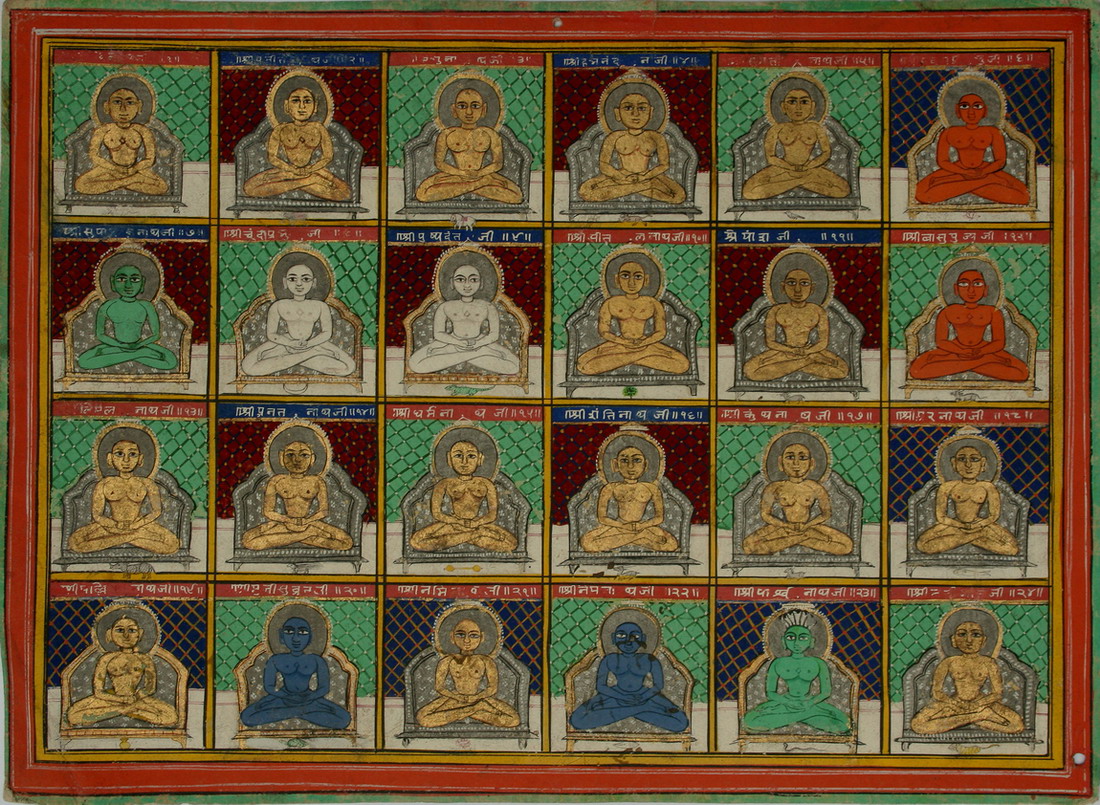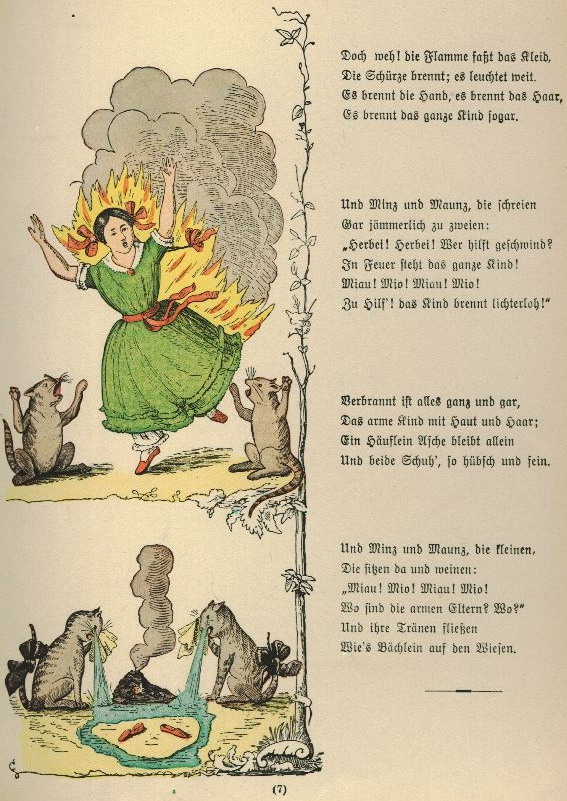|
Karma In Jainism
Karma is the basic principle within an overarching psycho-cosmology in Jainism. Human moral actions form the basis of the transmigration of the soul ('). The soul is constrained to a cycle of rebirth, trapped within the Temporality, temporal world ('), until it finally achieves liberation ('). Liberation is achieved by following a path of purification. Jains believe that karma is a physical substance that is everywhere in the universe. Karma particles are attracted to the soul by the actions of that soul. Karma particles are attracted when we do, think, or say things, when we kill something, when we lie, when we steal and so on. Karma not only encompasses the causality of transmigration, but is also conceived of as an extremely subtle matter, which infiltrates the soul—obscuring its natural, transparent and pure qualities. Karma is thought of as a kind of pollution, that taints the soul with various colours (''Lesya, leśyā''). Based on its karma, a soul undergoes transmigr ... [...More Info...] [...Related Items...] OR: [Wikipedia] [Google] [Baidu] |
Types Of Karma
In Jainism, the principle of Karma in Jainism, karma relates morality to the soul's cycle through life, death and rebirth. Moral actions accrue karma, which remain in the soul throughout the cycle, until liberation is achieved. Jains recognise eight main types of karma (''Prakriti'') which are categorized as either ‘harming’ or ‘non-harming’, with each category further divided into four types. The harming karmas (''ghātiyā karmas'') directly affect the soul powers by impeding its perception, knowledge and energy, and also bring about delusion. These harming karmas are: ''darśhanāvarniya'' (perception obscuring karma), ''gyanavarniya'' (knowledge obscuring karma), ''antarāay'' (obstacles creating karma) and ''mohanīya'' (deluding karma). The non-harming category (''aghātiyā karmas'') is responsible for the reborn soul's physical and mental circumstances (nāam), longevity (āayu), spiritual potential (gotra) and experience of pleasant and unpleasant sensations ( ... [...More Info...] [...Related Items...] OR: [Wikipedia] [Google] [Baidu] |
Jain Monasticism
Jain monasticism refers to the order of monks and nuns in the Jain community and can be divided into two major Religious denomination, denominations: the ''Digambara'' and the ''Śvētāmbara''. The monastic practices of the two major sects vary greatly, but the major principles of both are identical. Five ''mahāvratas'' (Great Vows), from Mahavira's teachings, are followed by all Jain ascetics of both the sects. Historians believe that a united Jain ''Sangha (Jainism), sangha'' (community) existed before 367 BCE, about 160 years after the ''Moksha (Jainism), moksha'' (liberation) of Mahavira. The community then gradually divided into the major denominations. However, no evidences indicate when the schism between the Digambara, Digambaras and the Śvetāmbara, Śvetāmbaras happened. Terminology ''Digambaras'' use the word ' for male monastics and ''aryika'' for female monastics. ''Svetambara monks'' are also called ''nirgrantha'' (without bonds). ''Śvētāmbaras'' also us ... [...More Info...] [...Related Items...] OR: [Wikipedia] [Google] [Baidu] |
Tirthankara
In Jainism, a ''Tirthankara'' (; ) is a saviour and supreme preacher of the ''Dharma (Jainism), dharma'' (righteous path). The word ''tirthankara'' signifies the founder of a ''Tirtha (Jainism), tirtha'', a fordable passage across ''Saṃsāra (Jainism), saṃsāra'', the sea of interminable birth and death. According to Jains, ''tirthankaras'' are the supreme preachers of ''dharma'', who have conquered ''saṃsāra'' on their own and made a path for others to follow. After understanding the true nature of the self or soul, the ''Tīrthaṅkara'' attains ''kevala jnana'' (omniscience). A Tirthankara provides a bridge for others to follow them from ''saṃsāra'' to ''moksha'' (liberation). In Jain cosmology, the wheel of time is divided into two halves, Utsarpiṇī', the ascending time cycle, and ''avasarpiṇī'', the descending time cycle (said to be current now). In each half of the cycle, exactly 24 ''tirthankaras'' grace this part of the universe. There have been infini ... [...More Info...] [...Related Items...] OR: [Wikipedia] [Google] [Baidu] |
Māhavīra
Mahavira (Devanagari: महावीर, ), also known as Vardhamana (Devanagari: वर्धमान, ), was the 24th ''Tirthankara'' (Supreme Preacher and Ford Maker) of Jainism. Although the dates and most historical details of his life are uncertain and varies by sect, historians generally consider that he lived during the 6th or 5th century BCE, reviving and reforming a proto-Jain community (which had possibly been founded by Pārśvanātha), and that he was an older contemporary of Gautama Buddha. Jains regard him as the spiritual successor of the 23rd ''Tirthankara'' Parshvanatha. According to traditional legends and hagiographies, Mahavira was born in the early 6th century BCE to a royal Kshatriya Jain family of ancient India. His mother's name was Trishala and his father's name was Siddhartha. According to the second chapter of the Śvētāmbara Ācārāṅga Sūtra, Siddhartha and his family were devotees of Parshvanatha. Mahavira abandoned all worldly po ... [...More Info...] [...Related Items...] OR: [Wikipedia] [Google] [Baidu] |
Mahabharata
The ''Mahābhārata'' ( ; , , ) is one of the two major Sanskrit Indian epic poetry, epics of ancient India revered as Smriti texts in Hinduism, the other being the ''Ramayana, Rāmāyaṇa''. It narrates the events and aftermath of the Kurukshetra War, a war of succession between two groups of princely cousins, the Kauravas and the Pandava, Pāṇḍavas. It also contains Hindu philosophy, philosophical and devotional material, such as a discussion of the four "goals of life" or ''puruṣārtha'' (12.161). Among the principal works and stories in the ''Mahābhārata'' are the ''Bhagavad Gita'', the story of Damayanti, the story of Shakuntala, the story of Pururava and Urvashi, the story of Savitri and Satyavan, the story of Kacha (sage), Kacha and Devayani, the story of Rishyasringa and an Ramopakhyana, abbreviated version of the ''Rāmāyaṇa'', often considered as works in their own right. Traditionally, the authorship of the ''Mahābhārata'' is attributed to Vyasa, Vy ... [...More Info...] [...Related Items...] OR: [Wikipedia] [Google] [Baidu] |
Ramayana
The ''Ramayana'' (; ), also known as ''Valmiki Ramayana'', as traditionally attributed to Valmiki, is a smriti text (also described as a Sanskrit literature, Sanskrit Indian epic poetry, epic) from ancient India, one of the two important epics of Hinduism known as the ''Itihasas'', the other being the ''Mahabharata''. The epic narrates the life of Rama, the seventh ''avatar'' of the Hindu deity Vishnu, who is a prince of Ayodhya (Ramayana), Ayodhya in the kingdom of Kosala. The epic follows Exile of Lord Rama, his fourteen-year exile to the forest urged by his father King Dasharatha, on the request of Rama's stepmother Kaikeyi; his travels across the forests in the Indian subcontinent with his wife Sita and brother Lakshmana; the kidnapping of Sita by Ravana, the king of Lanka, that resulted in bloodbath; and Rama's eventual return to Ayodhya (Ramayana), Ayodhya along with Sita to be crowned as a king amidst jubilation and celebration. Scholarly estimates for the earliest stage ... [...More Info...] [...Related Items...] OR: [Wikipedia] [Google] [Baidu] |
Krishna
Krishna (; Sanskrit language, Sanskrit: कृष्ण, ) is a major deity in Hinduism. He is worshipped as the eighth avatar of Vishnu and also as the Supreme God (Hinduism), Supreme God in his own right. He is the god of protection, compassion, tenderness, and love; and is widely revered among Hindu divinities. Krishna's birthday is celebrated every year by Hindus on Krishna Janmashtami according to the lunisolar calendar, lunisolar Hindu calendar, which falls in late August or early September of the Gregorian calendar. The anecdotes and narratives of Krishna's life are generally titled as ''Krishna Līlā''. He is a central figure in the ''Mahabharata'', the ''Bhagavata Purana'', the ''Brahma Vaivarta Purana,'' and the ''Bhagavad Gita'', and is mentioned in many Hindu philosophy, Hindu philosophical, Hindu theology, theological, and Hindu mythology, mythological texts. They portray him in various perspectives: as a god-child, a prankster, a model lover, a divine hero, ... [...More Info...] [...Related Items...] OR: [Wikipedia] [Google] [Baidu] |
Rama
Rama (; , , ) is a major deity in Hinduism. He is worshipped as the seventh and one of the most popular avatars of Vishnu. In Rama-centric Hindu traditions, he is considered the Supreme Being. Also considered as the ideal man (''maryāda'' ''puruṣottama''), Rama is the male protagonist of the Hindu epic '' Ramayana''. His birth is celebrated every year on Rama Navami, which falls on the ninth day of the bright half ( Shukla Paksha) of the lunar cycle of Chaitra (March–April), the first month in the Hindu calendar. According to the ''Ramayana'', Rama was born to Dasaratha and his first wife Kausalya in Ayodhya, the capital of the Kingdom of Kosala. His siblings included Lakshmana, Bharata, and Shatrughna. He married Sita. Born in a royal family, Rama's life is described in the Hindu texts as one challenged by unexpected changes, such as an exile into impoverished and difficult circumstances, and challenges of ethical questions and moral dilemmas. The most not ... [...More Info...] [...Related Items...] OR: [Wikipedia] [Google] [Baidu] |
Cautionary Tale
A cautionary tale or moral tale is a tale told in folklore to warn its listener of a Risk, danger. There are three essential parts to a cautionary tale, though they can be introduced in a large variety of ways. First, a taboo or prohibition is stated: some act, location, or thing is said to be dangerous. Then, the narrative itself is told: someone disregarded the warning and performed the forbidden act. Finally, the violator comes to an unpleasant fate, which is frequently related in expansive and grisly detail. Cautionary tales and conformity Cautionary tales are wikt:ubiquitous, ubiquitous in popular culture; many urban legends are framed as cautionary tales: from the lover's lane haunted by a hook-handed murderer to the tale of a man who shot a cactus for fun only to die when the plant toppled onto him. Like horror fiction, generally the cautionary tale exhibits an ambivalent attitude towards social taboos. The narrator of a cautionary tale is momentarily excused from the or ... [...More Info...] [...Related Items...] OR: [Wikipedia] [Google] [Baidu] |
Paul Dundas
Paul Dundas (23 May 1952 – 5 April 2023) was a Scottish Indologist, an honorary fellow in Sanskrit language and Head of Asian studies at the University of Edinburgh. His teachings and research focused extensively on understanding Jainism, Buddhism Buddhism, also known as Buddhadharma and Dharmavinaya, is an Indian religion and List of philosophies, philosophical tradition based on Pre-sectarian Buddhism, teachings attributed to the Buddha, a wandering teacher who lived in the 6th or ..., Sanskrit literature and Middle Indo-Aryan philology. He was regarded as one of the leading scholars in Jaina and Prakrit studies. He was a member of the Council of the Pali Text Society. Bibliography and research papers Bibliography Following is the partial list of his books: *Dundas, P. (1992). ''The Jains. '' The Library of religious beliefs and practices. London: Routledge. *Dundas, P. (1998). ''The meat at the wedding feasts: Kr̥ṣṇa, vegetarianism and a Jain dispute. ... [...More Info...] [...Related Items...] OR: [Wikipedia] [Google] [Baidu] |
Mahavrata
The Five Vows of Jainism include the ''mahāvratas'' (major vows) and ''aṇuvratas'' (minor vows). Overview Jain ethical code prescribes two '' dharmas'' or rules of conduct. One for those who wish to become ascetic and another for the ''śrāvaka'' (householders). Five fundamental vows are prescribed for both votaries. These vows are observed by '' śrāvakas'' (householders) partially and are termed as ''anuvratas'' (small vows). Ascetics observe these fives vows more strictly and therefore observe complete abstinence. These five vows are: * ''Ahiṃsā'' (Non-violence) * ''Satya'' (Truth) * '' Asteya'' (Non-stealing) * ''Brahmacharya'' (Chastity) * ''Aparigraha'' (Non-possession) According to the Jain text '' Puruşārthasiddhyupāya'': Apart from five main vows, a householder is expected to observe seven supplementary vows (''śeelas'') and last '' sallekhanā'' vow. ''Mahāvratas'' (major vows) ''Mahavrata'' (lit. major vows) are the five fundamental observed by the ... [...More Info...] [...Related Items...] OR: [Wikipedia] [Google] [Baidu] |







